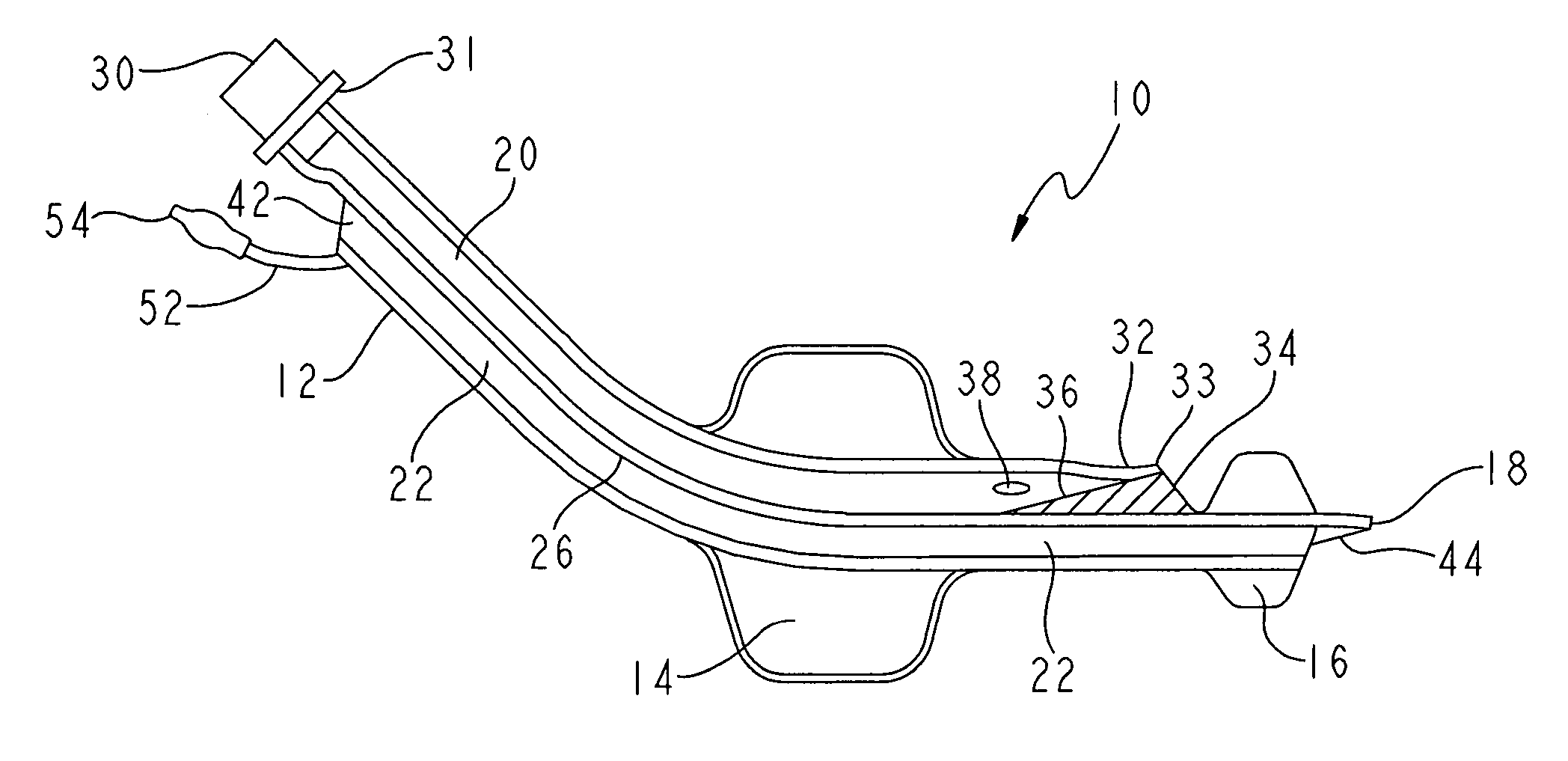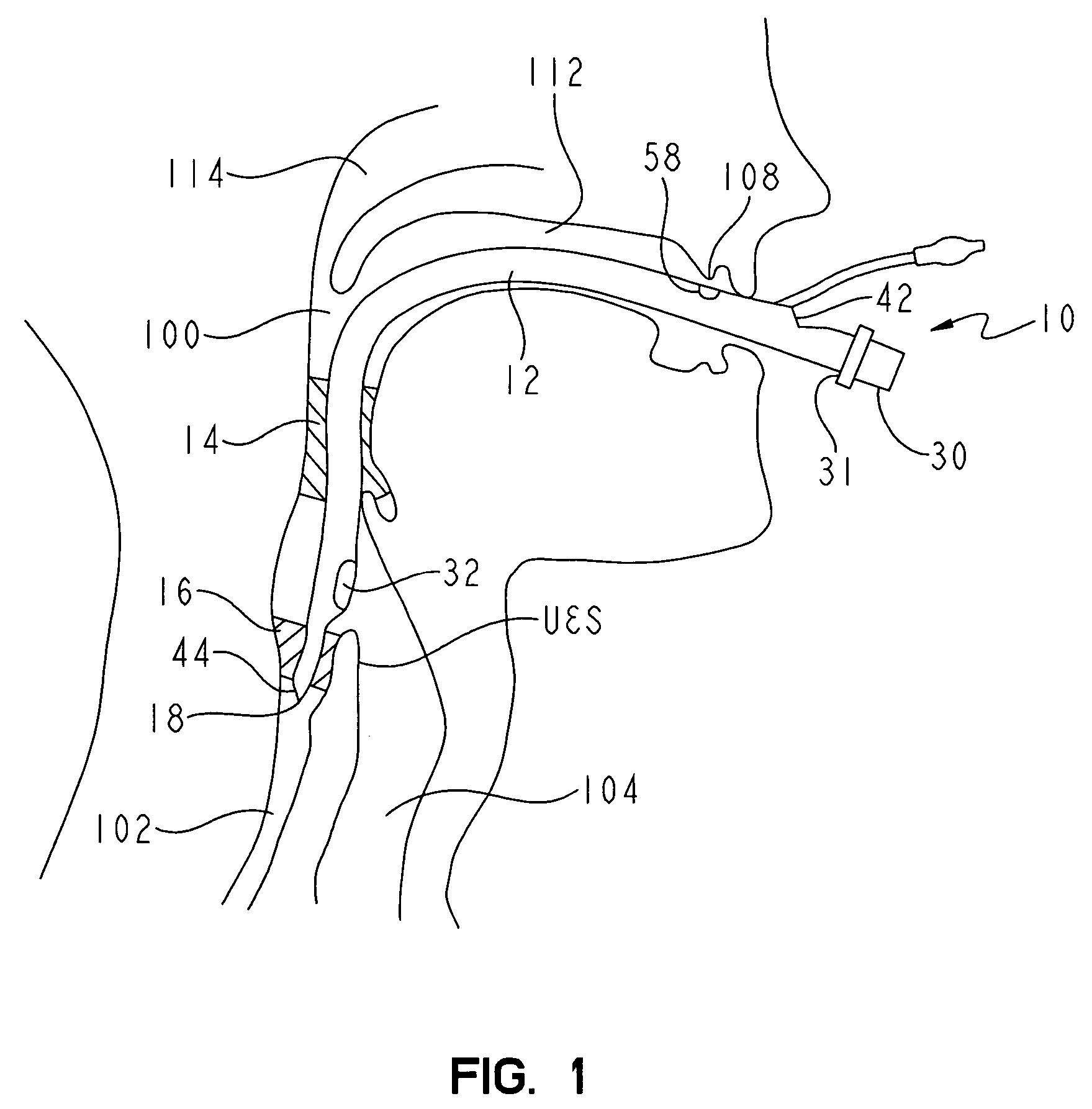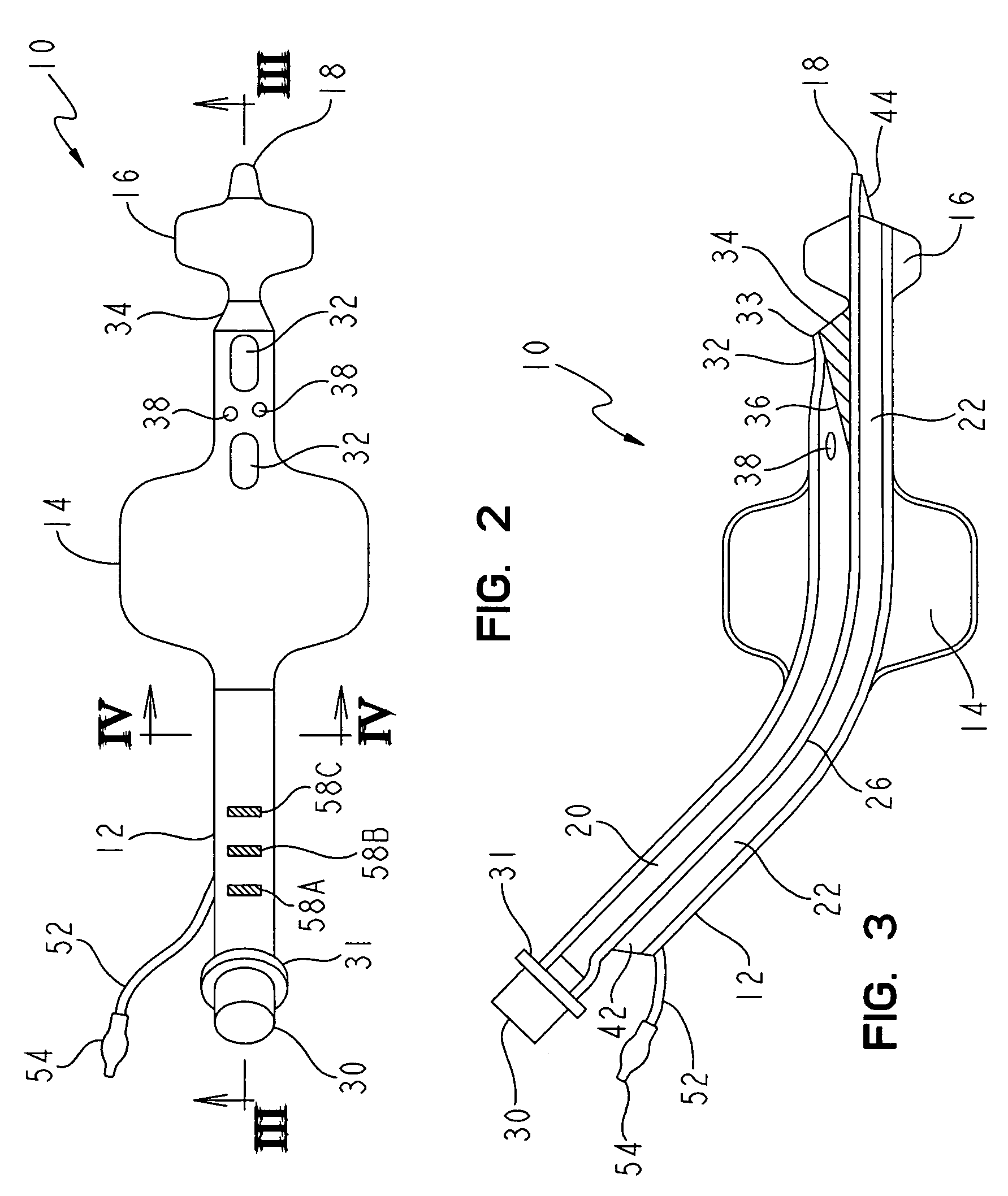Non-tracheal ventilation tube
a ventilation tube and non-tracheal technology, applied in the field of non-tracheal ventilation tubes, can solve the problems of insufficient respiratory gases reaching the patient, irritating the patient, and difficult breathing of patients spontaneously, so as to reduce the outside diameter of the tube shaft, reduce the lifting of the larynx of the patient, and reduce the effect of the tube diameter
- Summary
- Abstract
- Description
- Claims
- Application Information
AI Technical Summary
Benefits of technology
Problems solved by technology
Method used
Image
Examples
Embodiment Construction
[0035]FIG. 1 shows a non-tracheal ventilation tube 10 inserted into the airway 100 and extending into the esophagus 102 of a patient. The non-tracheal ventilation tube 10 comprises a multi-lumen tube shaft 12 having a distal end 18; and attached to the tube shaft 12 are an inflatable proximal cuff 14 and an inflatable distal cuff 16. The non-tracheal ventilation tube 10 preferably has an S-shaped longitudinal profile to help ensure that the distal end 18 of the non-tracheal ventilation tube 10 is introduced into the esophagus 102 and not into the trachea 104. The distal end 18 of the non-tracheal ventilation tube 10 is preferably made of a soft and flexible material for greater patient comfort. When properly introduced into the airway 100 of the patient, the inflated proximal cuff 14 blocks the trachea 104 from the nasopharynx 114 and the oropharynx 112, and the inflated distal cuff 16 blocks the trachea 104 from the esophagus 102.
[0036]FIG. 2 shows a top-view of one embodiment of t...
PUM
 Login to View More
Login to View More Abstract
Description
Claims
Application Information
 Login to View More
Login to View More - R&D
- Intellectual Property
- Life Sciences
- Materials
- Tech Scout
- Unparalleled Data Quality
- Higher Quality Content
- 60% Fewer Hallucinations
Browse by: Latest US Patents, China's latest patents, Technical Efficacy Thesaurus, Application Domain, Technology Topic, Popular Technical Reports.
© 2025 PatSnap. All rights reserved.Legal|Privacy policy|Modern Slavery Act Transparency Statement|Sitemap|About US| Contact US: help@patsnap.com



